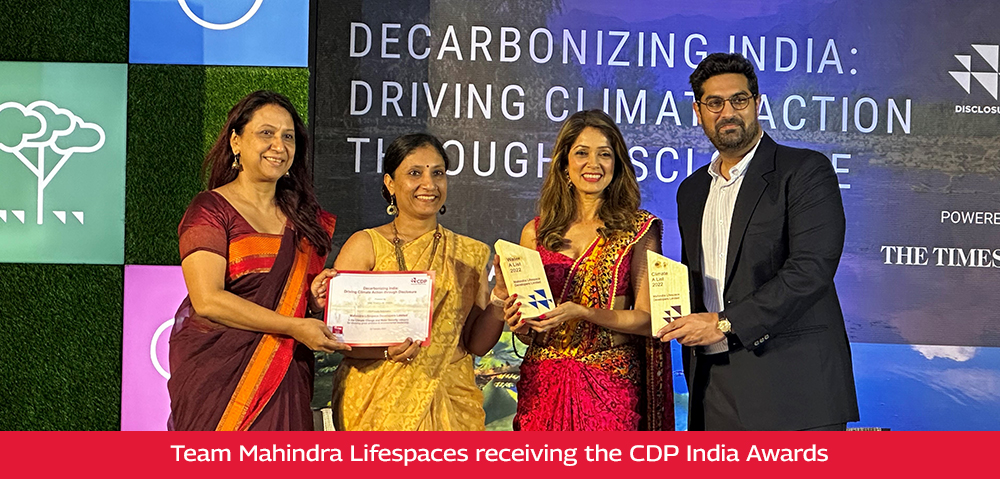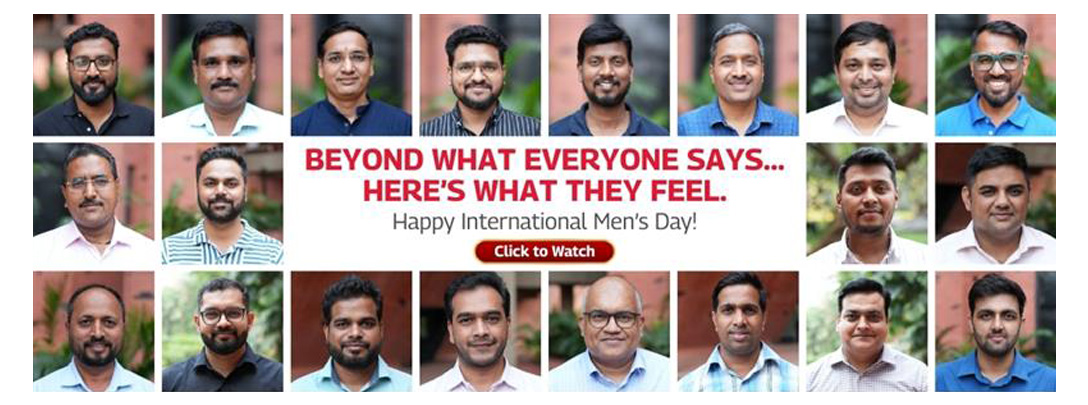Mahindra Lifespaces was recognised for its 'Double A' leadership rating in Climate Change and Water Security at CDP India Awards.
Since 2014, Mahindra Lifespaces (MLDL) has blazed a trail as a real estate developer with a 100% green-certified portfolio. With the launch of 'Eden', India's first Net Zero energy residential project in Bengaluru, the company has also set a new standard in sustainable development. Another significant milestone in MLDL's journey is its commitment to construct only Net Zero buildings beginning in 2030.

Dr Sunita Purushottam, who heads sustainability at Mahindra Lifespaces, talks about the concept of 'Green Buildings.'
Q. What goes into constructing a 'green building?'
A: A green building is the practice of creating structures and using processes that are environmentally responsible and resource-efficient throughout a building's life cycle: from siting to design, construction, operation, maintenance, renovation and deconstruction.
While the original green building concept included environmental goals, it now has social construction and use aspects. So, our ecological goals could be reducing environmental impact, sustainable design, water efficiency, energy efficiency, renewable energy utilisation, materials efficiency and waste reduction.
Our 'social goals' include the occupational health & safety of workers and the health and well-being of occupants.
It is important to note that the scope of 'green buildings' has undergone a sea change, including townships, industrial parks and cities. In that sense, it covers all types of human habitation.
Q. How's Mahindra Lifespaces progressing on its climate action journey?
A: Mahindra Lifespaces is the first Indian real estate company to publicly disclose its sustainability strategy and performance through a standalone sustainability report in 2011; the company completed a decade of sustainability reporting in 2020-21.
MLDL and Mahindra World City (Chennai and Jaipur) are the first Indian real estate companies with approved Science Based Targets (SBT) in line with the 1.5oC pathway, having paved a unique path as a real estate developer with a 100% green certified portfolio since 2014. These SBTs enable the company to achieve its 2040 carbon neutrality goal through its carbon neutrality action plan.
With a futuristic approach across its operations, Mahindra Lifespaces became a TCFD (Task Force on Climate-Related Financial Disclosures) supporter in February 2021, making it the first real estate sector brand from the real estate management and development industry in India to do so. As a TCFD supporter, we believe its recommendations are a valuable framework to increase transparency on climate-related risks and opportunities within financial markets.
Q. But how's aligning with TCFD helping the business?
A: We have realised the benefits of utilising the TCFD principles in our operations. The four areas where we see a visible impact are:
Risk assessment: The TCFD framework has helped us streamline the process and act quickly by integrating climate-related risks into the ERM.
Strategic planning: We have identified the climate and other risks and developed mitigation strategies based on the short, medium, and long-term impacts. This enables early detection of a potential ESG risk across our project locations.
Capital allocation: Our Sustainability Roadmap and climate action plan are aligned with our committed climate goals. Business decisions related to capital allocation for each site are aligned with these climate goals and roadmap.
Brand value: All the preceding steps ultimately help us design a resilient and future-ready product. Transparency and completeness of our disclosures on climate change and other risks with mitigation measures provide for increased brand reputation and investments.
Q. Construction, by itself, is a polluting sector – leaving a large carbon footprint. There's dust pollution, a lot of water use, construction debris, polluting logistics etc. And once the building is built, the residents use power, water etc. How do you plan for these variables?
A: Construction activities use natural resources, disrupt natural ecosystems, and cause air, water, noise, land pollution and contribute to greenhouse gas emissions. Urban living also has its share of resource use and pollution. Buildings contribute to around 38% of global GHG emissions.
To ensure sustainability across our real estate development lifecycle, we have integrated it into our business, design, construction, marketing, and sales processes.
- Our business development is focused on providing equitable prices and finding suitable locations for our projects with minimal risk to the environment and occupants.
- We have adopted climate-responsive design measures in our projects that ensure building optimisation, passive design, and human-centric design.
- Our projects ensure legal compliance with environmental and social norms. We provide minimum environmental impact by minimising resource utilisation, waste management, energy efficiency, and material selection.
- Through differentiated marketing, we have leveraged sustainability as our USP, and our marketing campaigns are focused on harnessing sustainability as the differentiator.
- We have also introduced a green sales experience by pitching green show flat labelling and a green site tour.
You can also share your thoughts in the Comments section below!




